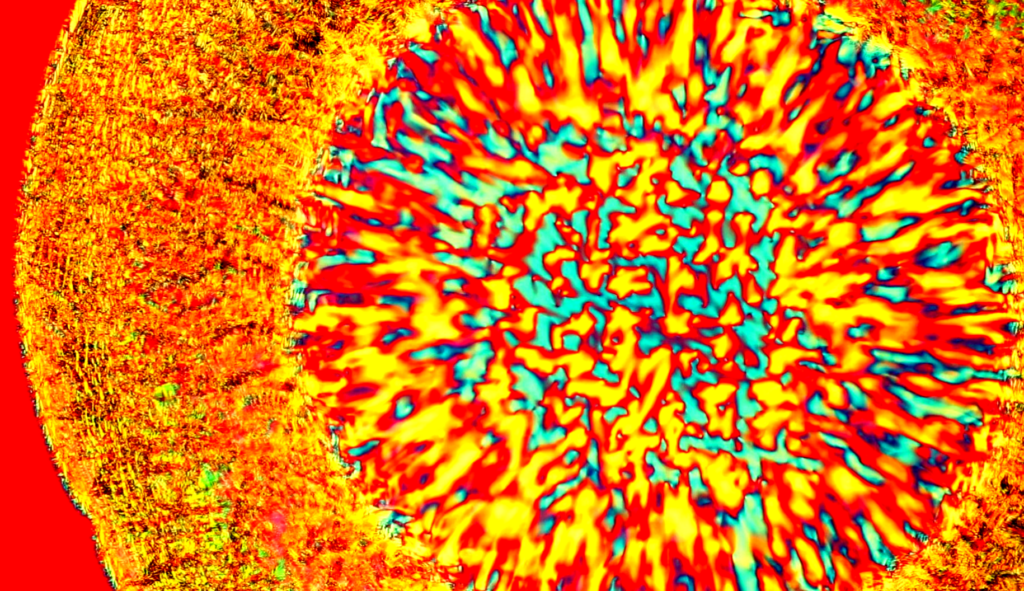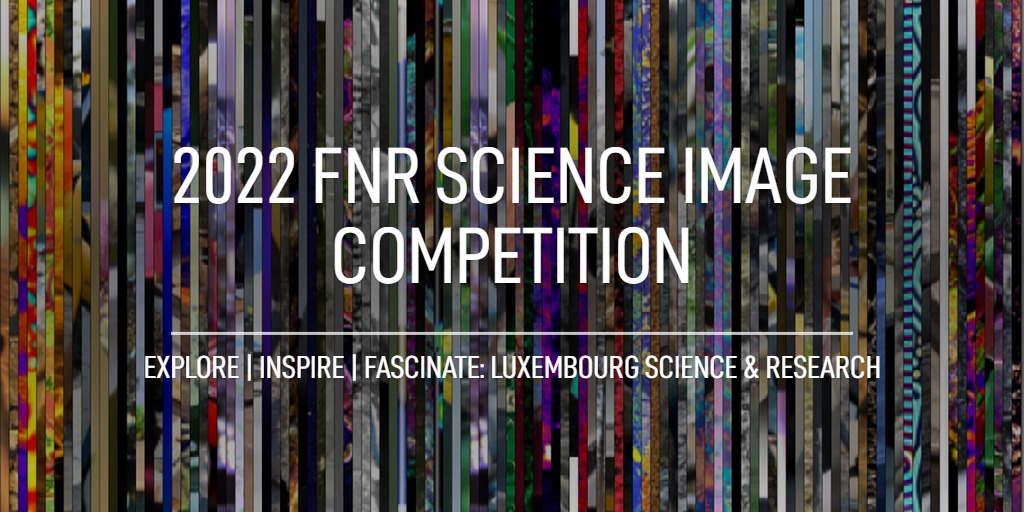BACK TO RESEARCH WITH IMPACT: FNR HIGHLIGHTS

The FNR Science Image Competition aims to show the beauty of research and science outreach in Luxembourg. FNR ATTRACT Fellow Anupam Sengupta, Victor Da Silva, and Vamseekrishna Ulaganathan’s ‘the bubbly oil’ is one of the awarded images in the Object of Study category 2022. Learn more about this fascinating liquid crystals image and the science behind it.

Resembling a solar flare, this image in fact captures the texture of a drying droplet of lyotropic liquid crystals (LLCs). They are obtained by dissolving molecules that have both a ‘water-loving’ and a ‘water-hating’ part, which causes them to form specific accumulations under certain conditions. LLCs exhibit behaviours of both liquid and solid phases.
The different colours seen in the image reveal the emergence of self-organised molecular orientations as the droplet dries. Anupam Sengupta team captured the image using a microscope that polarises light. The radius of the drying droplet is ~250 µm – about the length of a dust mite.
Lyotropic liquid crystal phases constitute one of the fundamental phases of biological fluids, they are hence highly relevant in biomedicine, food technology and physics of living matter.
Physics of living matter is the focus of FNR ATTRACT Fellow Prof Dr Anupam Sengupta at the University of Luxembourg, who stresses the importance of looking at microorganisms to fully understand changes in our environment.
Organisms not visible to the naked eye can tell us much about our environment
“We generally see impacts on a larger scale, but what we often end up neglecting and ignoring is the consequence of these changes on some of the tiniest organisms at the base of our ecosystem. These organisms, including bacteria and algae, are not visible to the naked eye, yet they play crucial roles in regulating and holding our ecosystem in a balanced state,” Anupam Sengupta explains.
“Algae, for example, are photosynthetic microorganisms which process sunlight to generate 50% of the oxygen we breathe, and in doing so, absorb enormous volumes of atmospheric carbon dioxide.”
“Climate change, which can e.g. be due to changes in the temperature, or light conditions, have cascading impacts. Take for example the bush fire in Australia in 2020: It drove many species from their natural habitats, restructuring the ecological networks formed by those species. A similar scenario plays out if you scale things down to the dimension of the microorganisms.”
Discover more about this research
About the FNR Science Image Competition – discover the exhibition!
The FNR Science Image Competition ran for the first time in 2020, on the occasion of the FNR’s 20th birthday. Now in its third edition, the 2022 awarded and ‘distinction’ images – along with the ‘Prix du Public’ awarded in collaboration with media partner RTL, can be discovered at an exhibition at the Luxembourg Science Center from 29 June until the end of September 2022.
More exhibitions, such as the annual exhibition in front of Lycée de Garçons in Luxembourg-Limpertsberg (Place Auguste Laurent), will follow later in the year. Do not miss your chance to experience these fascinating images on 2m tall posters!
Categories in the FNR Science Image Competition
1) Object of study: From the microcosm to the macrocosm, images of the research object captured by scientists using a camera or generated by a computer.
2) Scientists in action: Photographs of research in practice, presented by and featuring those conducting it.
3) Places and tools: Photographs of the surroundings in which scientists take measurements, generate data, share their passion, make discoveries and of the instruments they use while doing so.
4) Science outreach activities: Photographs of an activity where researcher and science communicators dialogue with the school children, students or the wider public or of interactive projects for school children, students and the wider public, giving them an overview of science and research and/or scientists’ research methods.
Discover the stories behind more images from the 2022 FNR Science Image Competition
WORD FROM THE JURY
An international jury selected the winning photographs, images and videos, based on their aesthetic quality and their aptitude to inspire and fascinate, to convey or to illustrate knowledge, to narrate a story, to engage the public to explore a new universe.
For the jury, the image illustrates the unexpected visual and material dimensions that have been opened up by scientists. The viewer’s attention is instantly caught by the colourful composition of the image and they are invited to dig deeper to satiate their curiosity.


